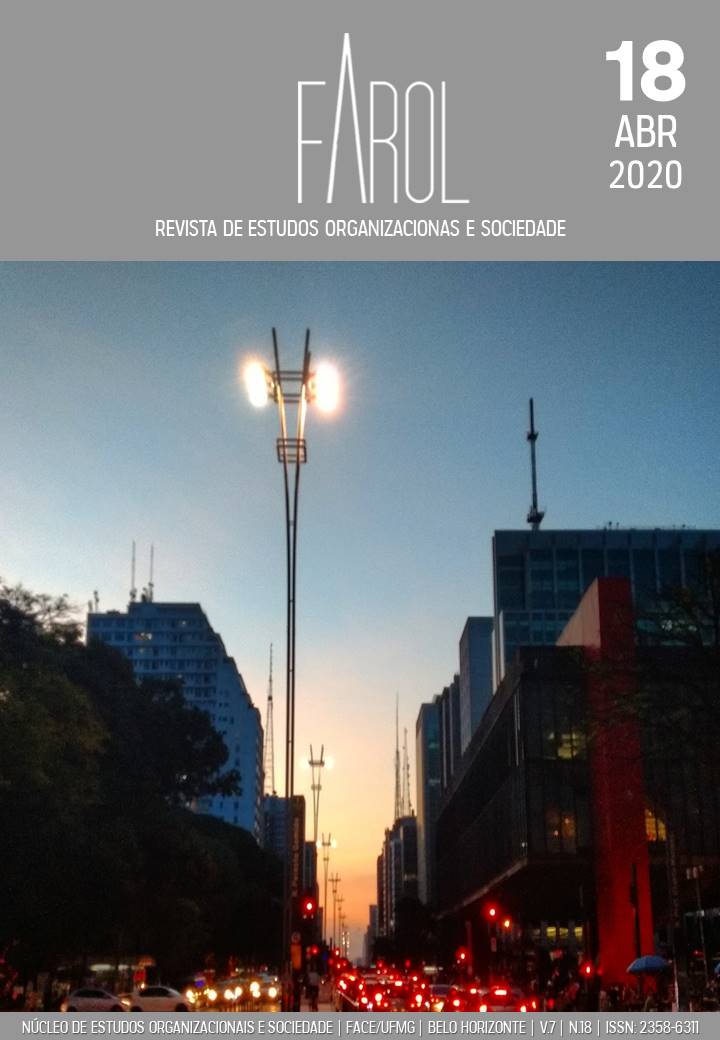AVENIDA PAULISTA: FROM A FEW TO ALL
DOI:
https://doi.org/10.25113/farol.v7i18.6071Keywords:
Cities, Organizations, Paulista avenueAbstract
This photographic record was made in April 2019. The late afternoon light with clear skies - something relatively rare in São Paulo, was the motivation to record the moment. To return to this record and reinterpret it is to remember how one of the most famous avenues in Brazil gradually became a more "of all" and less "of few". A few decades ago, it was the financial center of the country. It still concentrates many operations of this kind, but the capital has preferred to migrate to other avenues and regions of the city. For some, Paulista Avenue is experiencing its decadence, as the capital is less and less interested in being there and the capital that is still there now shares space with the growing street population. Contrasts that certainly can be perceived in other points of Paulicéia. For others, Paulista Avenue was (re)ssigned and became more democratic: its bands give way to the open-air park on Sundays, with musicians and craftsmen occupying every corner, families of all configurations and social classes consuming the culture that comes from the street and from formal cultural spaces: the oldest, such as the Museum of Art of São Paulo (MASP) - which can be seen in the photograph. And the most recent, like the Moreira Salles Institute (IMS). It is the avenue that most represents the largest city in the country: that pulsates, that moves, that is (re)organized by its agents.
References
Downloads
Published
Issue
Section
License
Copyright (c) 2020 Maurício Donavan Rodrigues Paniza

This work is licensed under a Creative Commons Attribution 4.0 International License.
Assume-se que em qualquer das modalidades de contribuições aceitas pela Farol – Revista de Estudos Organizacionais e Sociedade, ao submeter um trabalho, o(s) autor(es) se reconhece(m) como detentor(es) do direito autoral sobre ele e autoriza(m) seu livre uso pelos leitores, podendo ser, além de lido, baixado, copiado, distribuído, adaptado e impresso, desde que seja atribuído o devido crédito pela criação original. Em caso de aprovação do trabalho para publicação, os direitos autorais (inclusive os direitos de tradução) são exclusivamente do(s) autor(es).
Os autores devem concordar com os seguintes termos relativos aos Direitos Autorais:
a. Autores mantém os direitos autorais e concedem à revista o direito de primeira publicação, com o trabalho simultaneamente licenciado sob a Licença Creative Commons Attribution que permite o compartilhamento do trabalho com reconhecimento da autoria e publicação inicial nesta revista.
b. Autores têm autorização para assumir contratos adicionais separadamente, para distribuição não-exclusiva da versão do trabalho publicada nesta revista (ex.: publicar em repositório institucional ou como capítulo de livro), com reconhecimento de autoria e publicação inicial nesta revista.
c. Autores têm permissão e são estimulados a publicar e distribuir seu trabalho online (ex.: em repositórios institucionais ou na sua página pessoal) a qualquer ponto antes ou durante o processo editorial, já que isso pode gerar alterações produtivas, bem como aumentar o impacto e a citação do trabalho publicado (Veja O Efeito do Acesso Livre).

